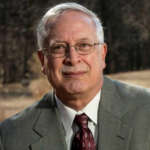More than 3,400 years ago, God told Joshua to lead the Hebrew people across the Jordan River into the Promised Land that is now Israel. If they worked hard and followed his commandments, it would become “a land flowing with milk and honey.”
At least the central, northern and Galilee (Kineret) regions would; they generally received enough rainfall to sustain ancient nomadic and agricultural communities. The south, the Negev Desert around and below Be’er Sheva and Abraham’s famous well, was too parched for much more than camel stops. In 1900 Be’er Sheva was home to just 300 hardy souls, and even today most of the Negev gets a fraction of Arizona’s annual rainfall.
Nevertheless, national founder and first prime minister David Ben Gurion envisioned milk, honey and much more in a prosperous Negev. Today, time-traveling Israelites would be astounded to see a lake and 660,000 people in the bustling modern city of Be’er Sheva – and crops, livestock and small towns transforming the vast desert.
I recently joined other volunteers in the area. We were overcome by emotion at memorials to victims of Hamas’s barbaric massacres last October 7. But we also visited hospitals and schools, and met with grateful, passionate, resolute, resilient people. We painted and spruced up several less devastated kibbutzim and marveled at how fruitful the desert has become.
Endless acres boast fields of wheat, flowers and vegetables; lemon, orange, date, olive, apple and avocado orchards; and huge “hothouses” that actually keep temperatures from getting too hot, while controlling sunshine and insects, enabling farmers to grow tomatoes, eggplants, berries, bananas and other bumper crops to feed Israel and send abroad.
We got dirty, weeding and pruning tomatoes, planting herbs and picking lemons. Scratches on my forearms still remind me that lemon trees have dastardly thorns. Who knew?
Israelite and Israeli commitments to inspiration, innovation and especially perspiration continue to pay dividends. They’ve fostered new technologies and techniques that turn dry wastelands into bountiful farmlands, using desalination, water recycling, drip irrigation and constant refinements.
Some Israelis worry that manmade climate change will make the country’s water and agricultural challenges even more daunting. Others point out that abundant rains in recent winters have helped raise Sea of Gallilee water levels to their maximum levels for the first time in decades, and that more atmospheric carbon dioxide spurs crop and natural plant growth.
Hebrew University astrophysicist Dr. Nir Shaviv says the sun (not CO2) is the control knob for planetary temperatures, anyway. When the sun is more active, he explains, it sends out stronger solar winds, reducing galactic cosmic rays streaming into Earth’s atmosphere. That causes clouds to be less white, less dense and less reflective of sunlight, resulting in a warmer Earth. When solar activity decreases, Earth cools. Graphs of solar activity and ocean temperatures over thousands of years confirm this.
The climate debate matters less, of course, when people do what our ancestors did: adapt to climate changes, natural or manmade, by employing our creative talents to devise new tactics and technologies for living and farming in cold, wet, dry and changing climates.
Rely less on nature’s unreliable beneficence and goodwill, become less at the mercy of the elements – and be more self-reliant, resourceful and innovative, in housing designs, heating and cooling systems, more sustainable manufacturing, and beyond. Israel has set a good example in water use and conservation.
Desalination plants use ultra-filtration and reverse-osmosis to remove salts and minerals from seawater
and brackish groundwater deposits. The leftover brine goes to the Mediterranean and Red Seas.
Israel’s eight desal plants annually produce 835 million cubic meters of expensive yet affordable safe drinking water for Israelis, Bedouins, and West Bank and Gaza Palestinian. (That’s 835 billion liters; 221 billion gallons.) Over 90% of Israel’s drinking water is desalinated, freeing up Sea of Galilee water that Jordanians can then purchase from Israel.
A vast water recycling system further aids in conquering deserts and droughts. Israel reuses over 85% of its water (with a goal of 95%). Treatment plants purify “graywater” from homes, hospitals, schools and businesses, so that farms can irrigate crops and polluted water stays out of rivers, streams and groundwater. The Shafdan wastewater treatment facility alone provides nearly 140 million cubic meters of clean, recycled irrigation water to Negev Desert farms every year.
Over half of Israel’s farm irrigation water is recycled graywater. Much of it is combined with urban and highway stormwater runoff and stored in hundreds of underground reservoirs, which local and regional communities also utilize.
Recurring droughts, growing populations and expanding agricultural needs underscore the imperative to build more desalination plants, treatment facilities and reservoirs in Israel and neighboring countries.
Drip irrigation delivers water slowly and directly to plant roots via a revolutionary network of hoses, valves and drip nozzles. That’s a monumental improvement over systems that spray water onto plant leaves and stems, resulting in significant loss through evaporation, especially in arid regions. Simcha and Yeshayahu Blass began developing the water-saving technology 65 years ago and established the Netafim irrigation products and services company to market their technologies and educate people worldwide.
Today, drip irrigation waters over three-fourths of Israel’s crops. However, only 5% of farms globally use the technology, due to a reluctance to change longstanding practices and the costs of replacing existing systems with initially expensive drip technologies.
Cutting-edge research continues apace in these and other water-related arenas, to further improve technologies, reduce their costs, decrease recycled water sediments that can eventually clog irrigated soils, optimize equipment efficiencies and crops’ water uptake, and promote the use of water-saving technologies in the United States and around the world.
Israel’s Arava Institute for Environmental Studies in the eastern Negev’s Kibbutz Ketura conducts research and teaches Israeli, Palestinian, Jordanian, African and Asian students how to utilize water and agricultural technologies and best practices. Led by Dr. Tareq Abu Hamed, it also teaches them to live and work together with other future scientists, farmers and leaders of different cultures, ethnicities and religions.
The institute understands that “in the hyper-arid, drought-stricken Middle East, one resource is more precious than water: Trust.” Since 1996, it has brought together more than 2,000 students to do research and engage in university-accredited programs. I’ve met some of them.
In a further testament to how far back these agricultural challenges go, Ketura is also home to a date tree called Methuselah because it was grown from a 2,000-year-old seed found in King Herod the Great’s palace and fortress at Masada, near the Dead Sea.
Perhaps instead of spending countless trillion of dollars trying to replace fossil fuels with wind, solar and battery technologies, we should focus on adapting to whatever climates we live in or encounter — especially since China is building hundreds of coal-fired power plants to manufacture wind turbines, solar panels, EVs, grid-scale batteries and transformers to sell to Western nations for that “energy transition.”
Photo by Kevin Gill. Creative Commons Attribution-Share Alike 2.0 Generic.





